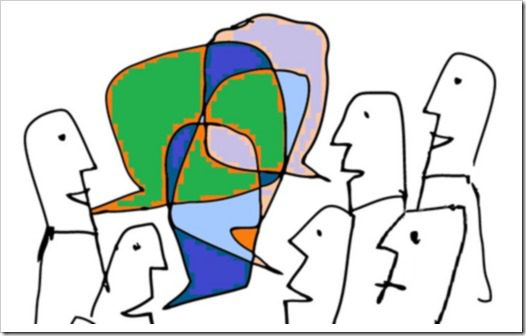Making community a Strategic Activity
Sitting in the MVP Summit this week on Microsoft campus in Redmond, I’ve been thinking a lot about community. The SharePoint community is a lively bunch – and very much similar to what I remember from my interactions with the Rational Software crowd back in the late 1990’s: energetic, passionate, and technically astute. Almost every session this week has ended (and some even started) with Q&A with the Microsoft product or engineer teams who were presenting, which is my favorite part. I love cutting through the prepared content (much of which tends to be heavy on the marketing messaging) and getting right to the heart of the real-world issues we all experience with our customers.
The value of this MVP community to Microsoft is massive, and yet some feel (including me) that Microsoft sometimes forgets this. Thankfully not this week – everyone seems to be really on the ball, and feedback has been positive from both MVPs and from the Microsoft people I’ve talked with. It seems that everyone is getting some value.
A key question every enterprise must ask at some point: How do we measure the value of community? Some companies are better than others at tracking their community activities. I’m doing a couple external community activities by using Yammer, which has become my de facto platform for external collaboration (sorry, Office365). some organizations do community-building through more structured tools, such as through their CRM platforms where every customer interaction is tracked as a separate activity, and every aspect of their customer and partner relationships is measured.
Honestly, organizations need to improve their ability to mine this data, looking for trends, better interpreting and taking action on customer feedback. Of course, you cannot measure something if you are not doing anything – so you could say that community + measurement = opportunities to iterate and improve.
Community is viewed by and large as a qualitative activity — a way of reaching out to customers and partners to improve relationships, and to build trust — but organizations still need to be able to quantify the value of those qualitative activities.
As you create or participate in community activities, think about the following questions:
- Are we properly tracking our community activities?
How are you defining your community activities, and how are you capturing them within your CRM or other systems? Maybe it was a user group, or maybe you connected with a prospective partner while participating in a job fair. You might track two activities differently if one is an online activity, and the other required someone to jump on an airplane to participate. Both may drive value, but without proper tracking and measurements, you won’t have an accurate view of the cost of participating. - How are we measuring community-influenced activities?
Assuming you have defined the types of community activities, you also need to measure the weight (value) of each outcome, such as whether the activity drove downloads, sales, or some other important KPI. Flying someone around the globe may result in wonderful feedback from dozens of customers, but may not provide the ROI that an enterprise hopes to get out of every community activity. Sometimes the benefit is improved relations, or good will. But for most organizations, it is also about decreasing costs (such as support) and increasing revenue. Understand your organizational goals for each community activity so that you can track which ones are the most successful. - Are we investing in tools that encourage deeper community involvement?
All of this tracking can mean a lot of overheard. Some companies employ full-time operations personnel to keep things organized, while others seek to build or buy tools to automate. How much visibility do you have into your social activities? How quickly are you able to adjust your systems and processes based on what you learn? And what kinds of tools are you making available to your own teams — as well as your customers and partners — to enable more accurate metrics and reporting?
These days, I don’t believe community is an option – it is essential to business, no matter what industry you find yourself. It is a key method for identifying prospective customers and partners. It is a great way to develop relationships with customer and partners, moving beyond the transactional sale and into a more empathetic, solution-focused relationship. And it can be the best way to find out what trends are happening, what customers are thinking, and what competitors are doing.
Are you ready for this change to your business? Do you have the right level of visibility, and the right tools and processes to track and measure your community activities? Time to start planning.





